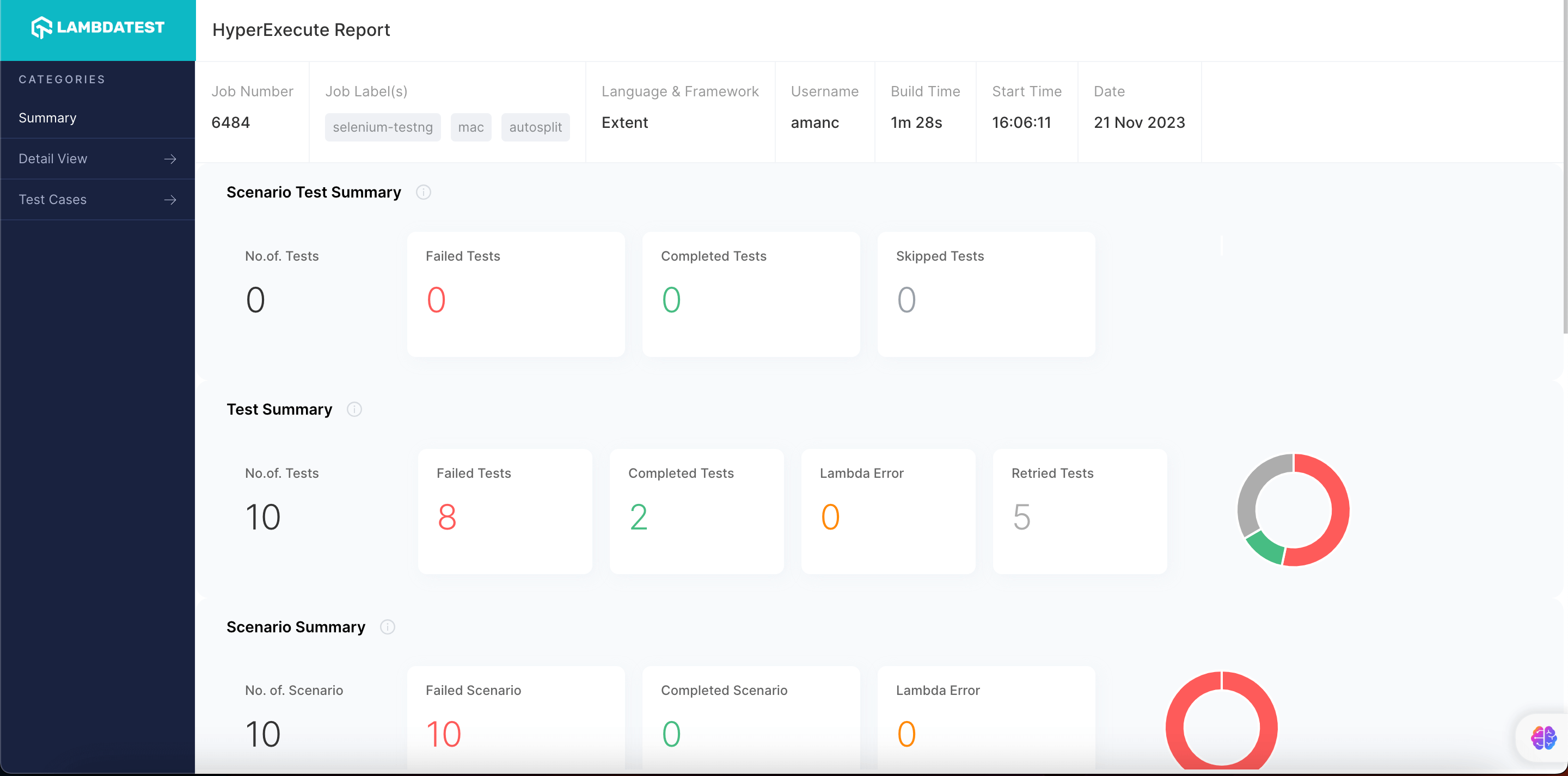HyperExecute Extent Report
Extent Reports is a popular reporting framework for Java, TestNG, and Selenium tests. It provides a comprehensive set of features for reporting test results, including detailed test case summaries, screenshots and videos of test execution, execution logs, and charts and graphs to analyze test results..
Pre-requisites
- Upgrade to extent reporting version 5 in the
pom.xmlfile. - Update import statements in the codebase from
com.relevantcodes(version 2) tocom.aventstack(version 5).
Implementation Steps
Follow these steps to enable Extent Reports for your HyperExecute job:
1. Upgrade Extent Reporting Version
Update the pom.xml file to include the latest version of the Extent Reporting library (version 5). Ensure that the necessary dependencies are correctly configured.
<dependency>
<groupId>com.aventstack</groupId>
<artifactId>extentreports</artifactId>
<version>5.0.0</version>
</dependency>
2. Modify Import Statements
Update import statements in your codebase to reflect the new package structure in Extent Reporting version 5. Replace com.relevantcodes with com.aventstack.
// Before
import com.relevantcodes.extentreports.ExtentReports;
import com.relevantcodes.extentreports.ExtentTest;
// After
import com.aventstack.extentreports.ExtentReports;
import com.aventstack.extentreports.ExtentTest;
3. Generate JSON Reports
Make changes in your codebase to generate individual JSON reports. These reports will serve as the source for the Extent Reports.
4. Update HyperExecute YAML Configuration
In the HyperExecute YAML configuration, add the following section to instruct the HyperExecute systems to generate Extent Reports:
report: true
partialReports:
type: json
location: reports/json
frameworkName: extent

Conclusion
By following these steps, your HyperExecute job will generate Extent Reports, providing a consolidated HTML report derived from individual JSON reports. This enhancement allows customers to access comprehensive and standardized reports conveniently at the conclusion of their HyperExecute jobs.